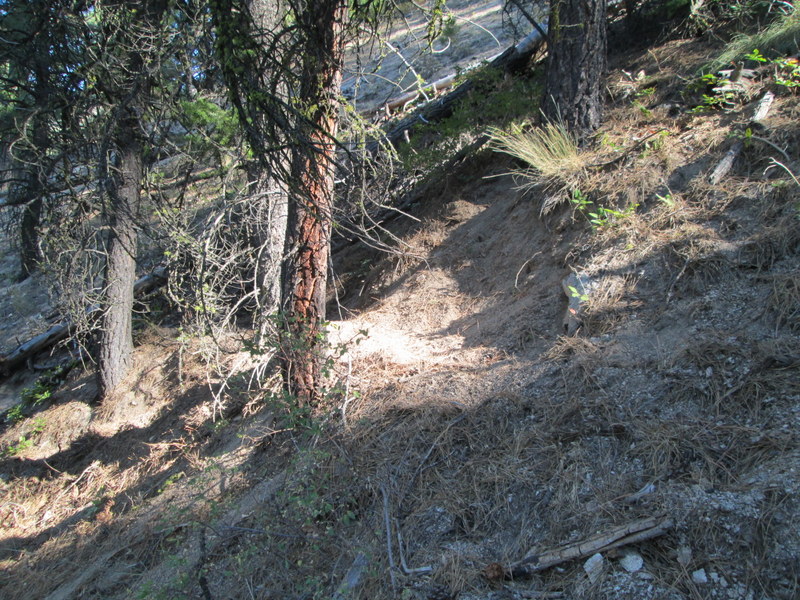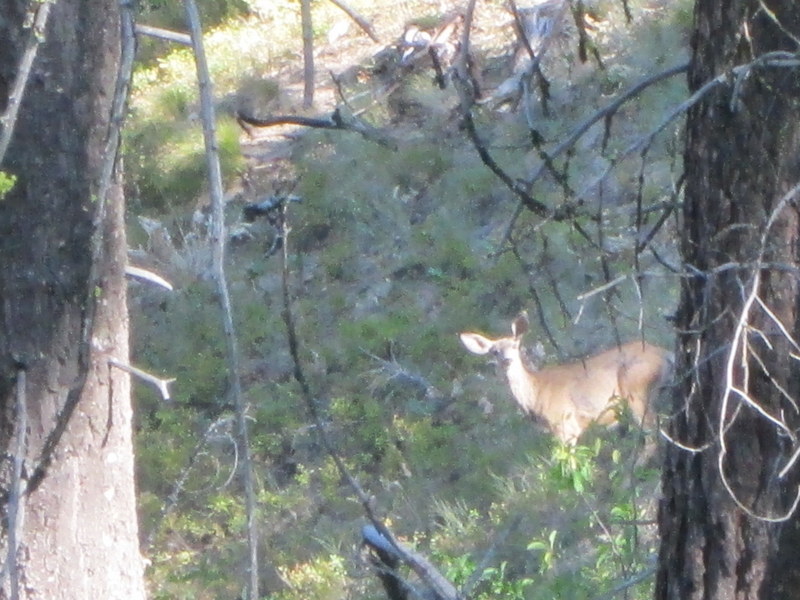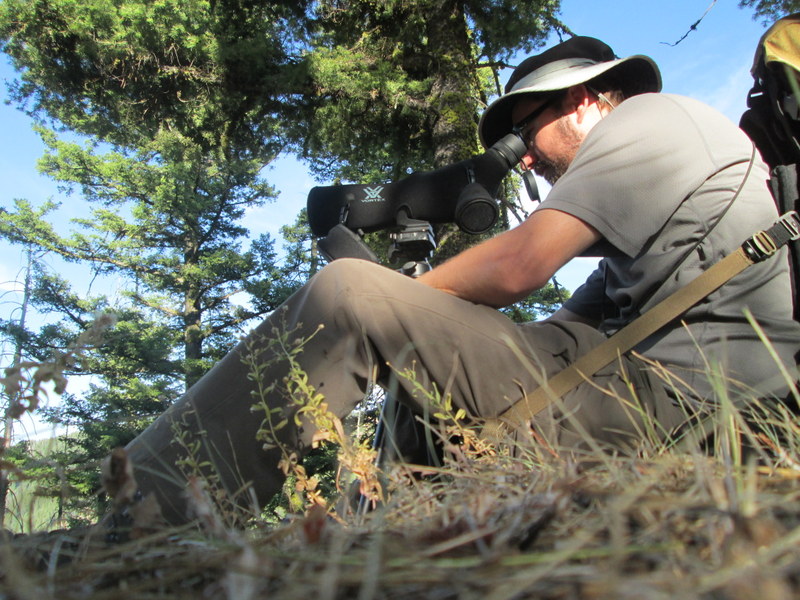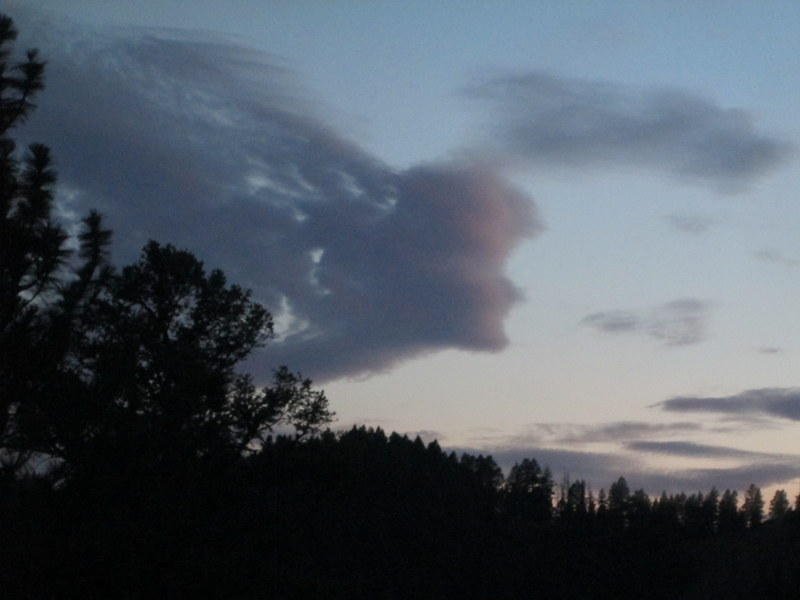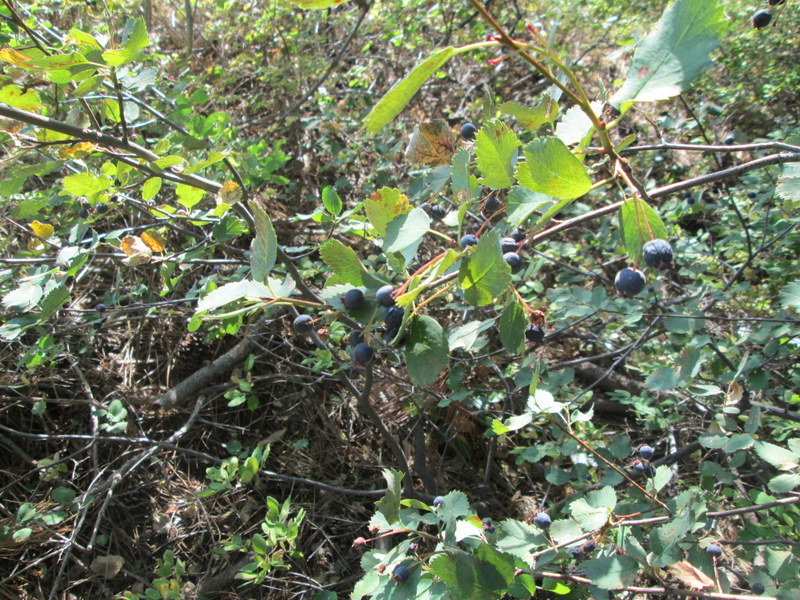On August 20th 2013 I got up at 3AM and headed out for an overnight scouting trip to the lower elevation canyon I had scouted in the Medium Effort Maximum Gain trip. I probably should have known better than to name a trip like that and in perfect irony this trip was the exact opposite. It was in the 90s this time and the 2000 foot elevation gain was a hot sweaty one, even in the early morning. Between the heat and the full moon there was not much activity during daylight and I didn’t see much in the 2 days I was there.
On the way in I found a trail up on the slope about 150 yards above the creek with lots of Deer tracks on it. This was a good find and eliminated a lot of the brush busting that occurs by traveling along the bottom of the canyon next to the creek. When I arrived at the base of the ridge I planned to hike up, as usual I stocked up on water. This was another one of those dry ridges where I have to pack in all my water for the duration of my trip.

A little ways up I found a nice 5 point Elk shed that was old and in bad shape. I left it there and planned to grab it on the way out. This is the second shed I have found here and plays more into the transition range theory, at least for Elk. The Deer seem to really like this canyon, there was lot’s of fresh tracks on all the game trails and some really heavily used beds.
About half way up I jumped a lone Doe that was bedded on a northwesterly slope.
I set up camp for the night in the same place as before, on a nice little flat spot that sits on a finger ridge. The finger ridge drops off fast and offers a great view down the canyon. This campsite is in a neat location, but the ridge itself is timbered and is hard to glass from. I have to hike another 40 minutes up the main ridgeline to get to a decent vantage point. In most of my other spots I can basically glass from my shelter, which I think is more efficient. I get more sleep and have less stumbling around in the dark with a headlamp. A head lamp floating around on a ridge or hillside is a beacon that advertises your presence like no other.
I am in between quality shelters on this trip and brought my 2 man bivy. This is actually a great little shelter for fair weather and only cost about $25.
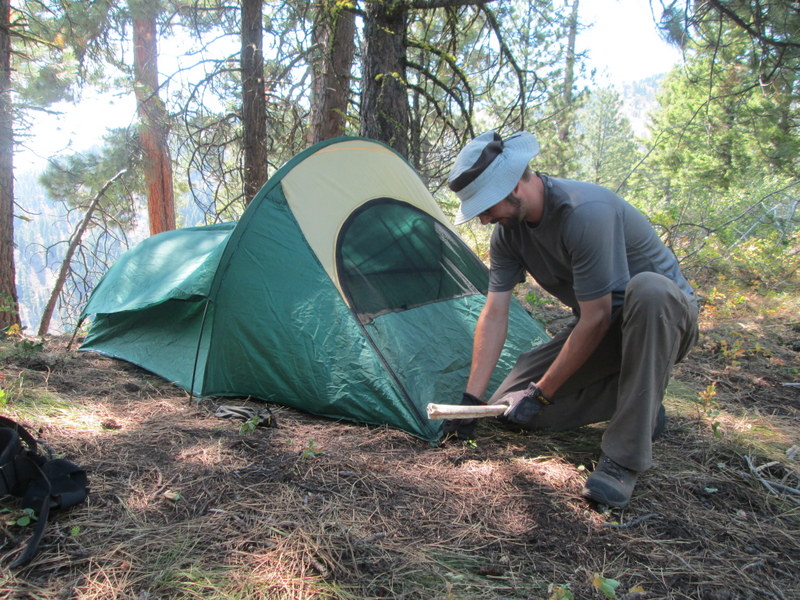
A Deer femur makes a great hammer for pounding stakes into the ground! After camp was setup it was time to hike up the main ridge for the evening glassing session.
The only thing I saw that evening was 2 Dusky Grouse and an interesting cloud formation.
The next morning I hiked up the main ridge again, glassing along the way where I could see between the trees. I saw some glimpses of a Black Bear down in the bottom before he got into some deep dark timber to bed down for the day and that was it. I wanted to keep going along the main ridge and see some new country, but I was about out of water. It would be about a 1500 foot drop in elevation to get water, which would use up a good part of the day and then I would be down in the bottom where everything in the canyon could spot my movement. I go through about 4.5 liters of water in a 24 hour period during the hot summer scouting trips. This includes enough water to cook 2 meals, so if I bring food that doesn’t need to be cooked and/or more water then I can last longer. Water weighs a lot and packing an extra 4 liters up this mountain would be getting into the point of diminishing returns for me. There is no trail, it is a straight up constant climb and I’m in good shape, but not beastmode shape, so the extra 8 pounds or so of water starts to take it’s toll on my overall pack weight for the initial elevation gain. On this trip I could have continued hiking the ridge for the morning if I had not used water to cook food. These are the kind of logistical problems that you are able to figure out while scouting and then when the hunting season rolls around you can make the most of your time.
Before I trekked back down the ridge, I had a light meal of juicy Sask berries.
I’m not quite ready to give up on this spot yet. It’s logistically difficult; water is an issue, there is no real good glassing points, and I didn’t see any Bucks. But I know the area for sure holds a lot of Deer. This was evidenced by the amount of fresh tracks and beds everywhere. They looked to be mostly from Does, but in my experience the Bucks are not far. Usually within a mile or so and higher on the mountain or main ridge. Also when I came in here in early spring I saw a few Bucks, one of which was older in the face. so It’s time to go back to the maps and modify my approach. Adaptability will usually get you more results than perseverance.

